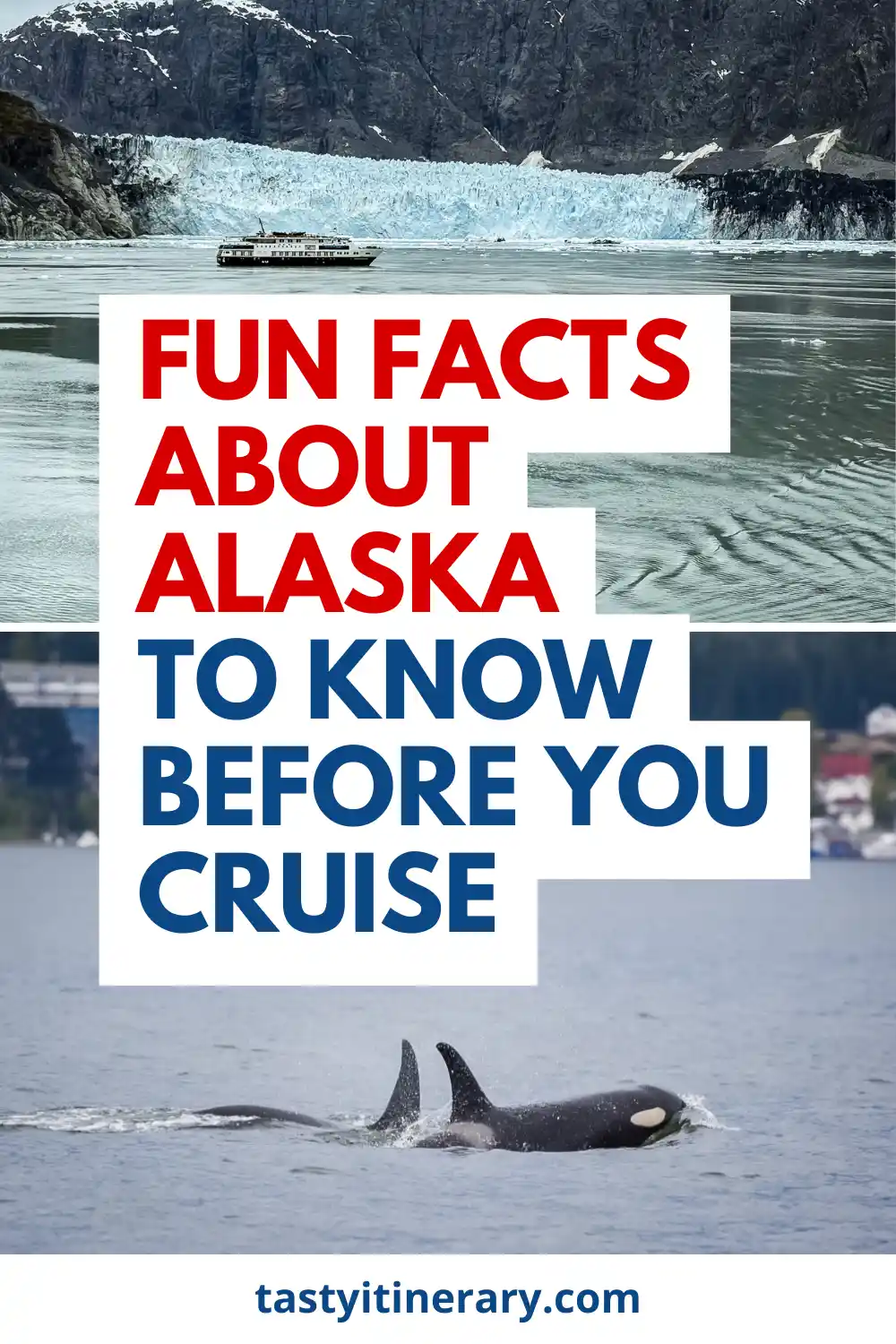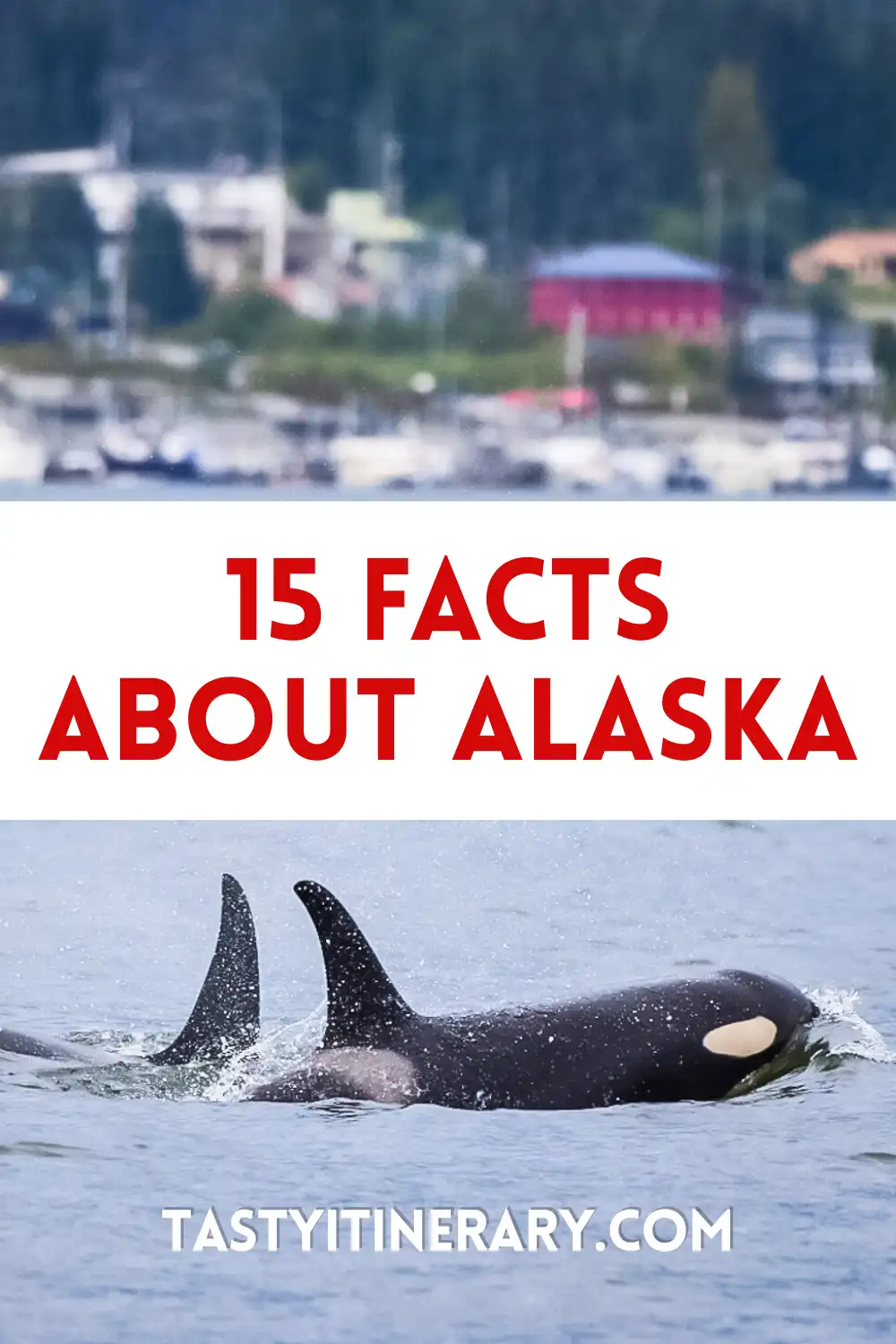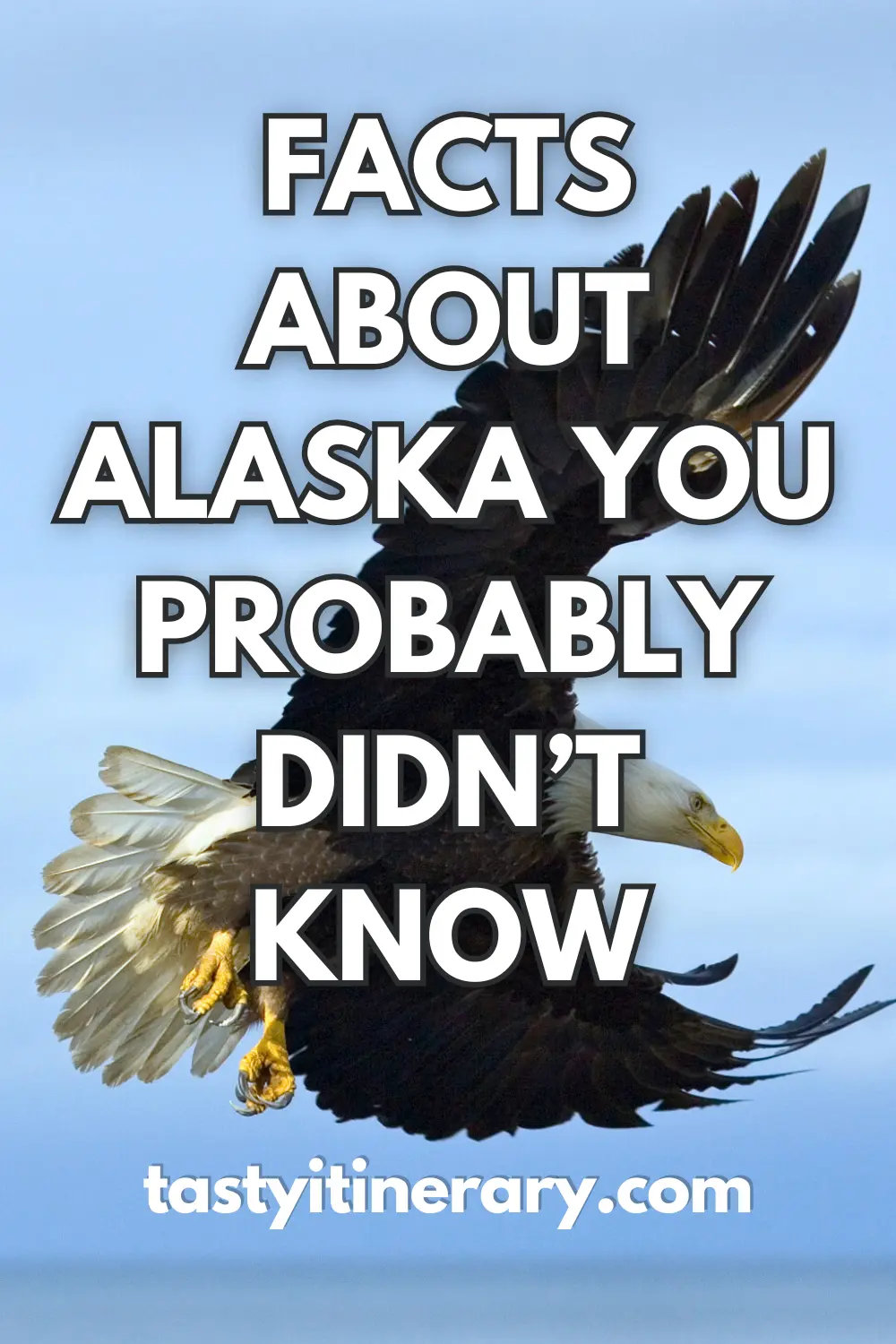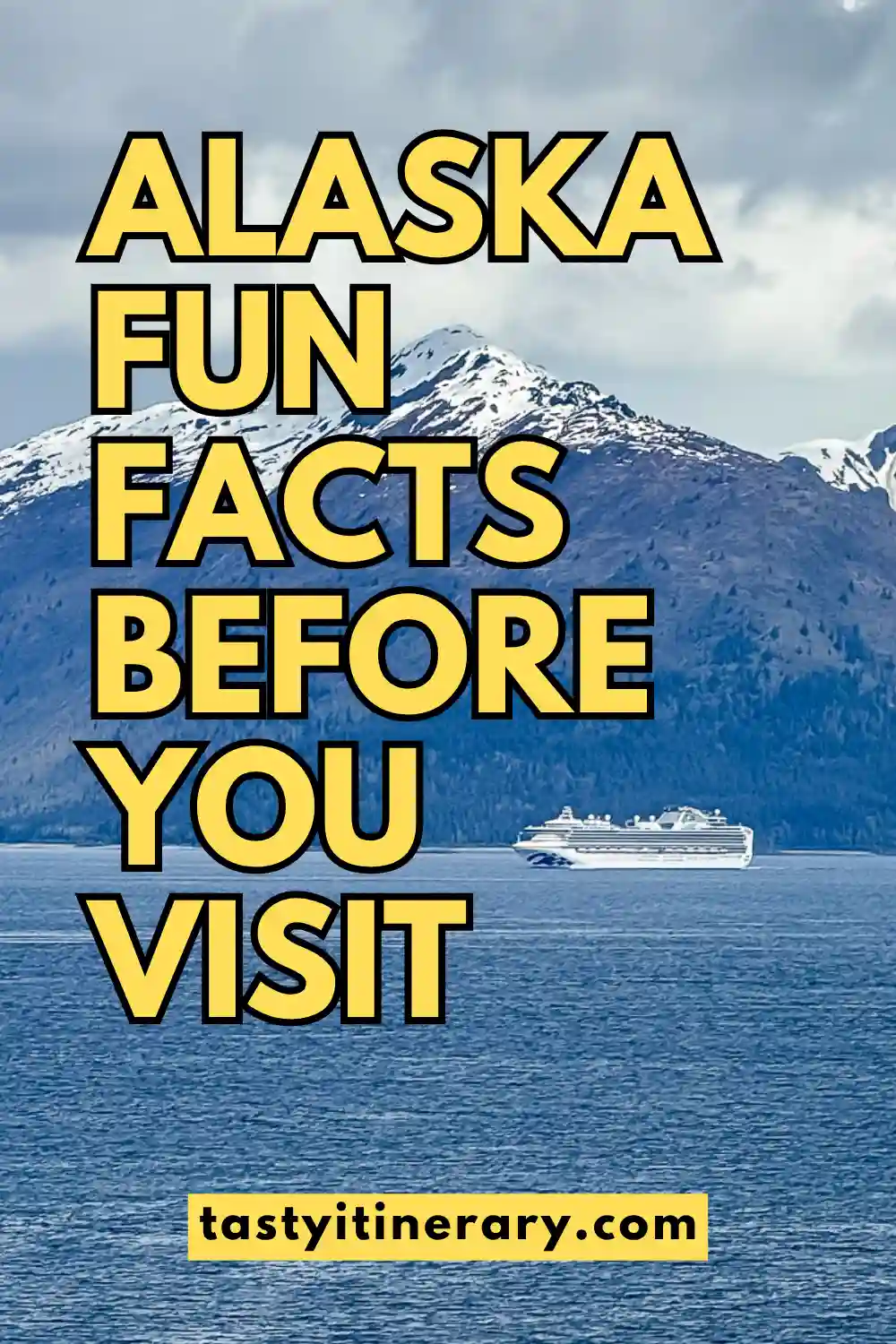16 Fun Facts About Alaska to Know Before You Cruise
Thinking about cruising to Alaska? It’s one of those trips people don’t stop talking about. These facts about Alaska, from glaciers and bald eagles to midnight sun, volcanoes, and towns with no roads in or out, are just fun to know before you sail.
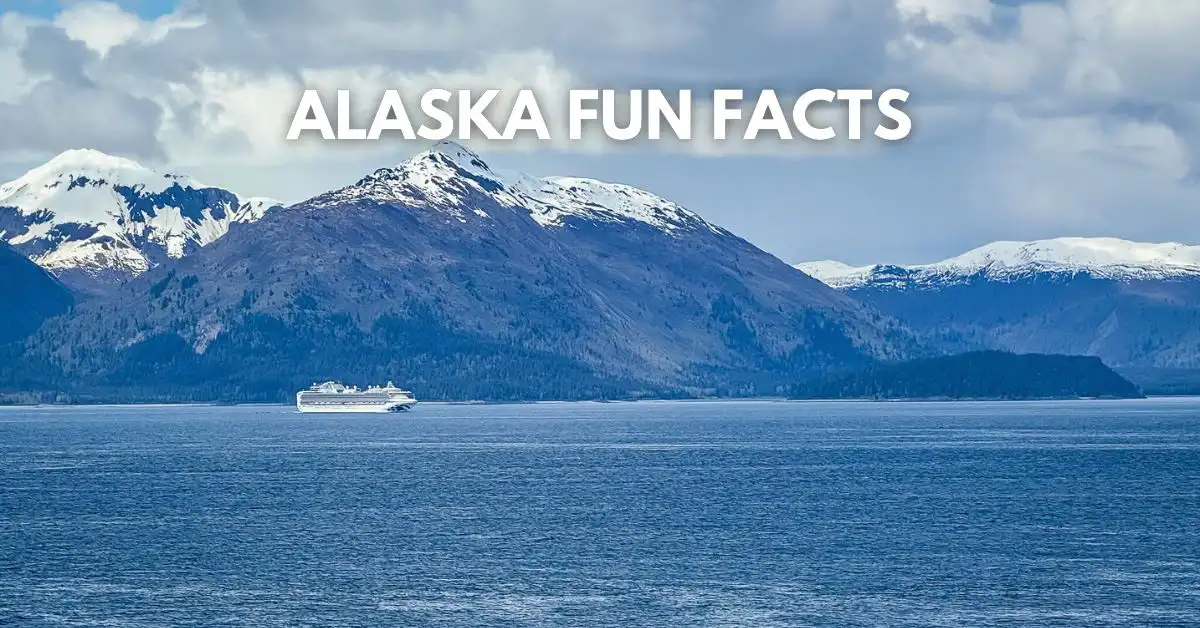
Disclaimer: This post may contain affiliate links, meaning we earn a commission at no extra cost. Please refer to our full disclosure for details.
1. Alaska is huge
It’s bigger than Texas, California, and Montana combined. You could fit 75 New Jerseys inside it and still have space left over. When you’re cruising from one port to the next, you start to realize how spread out everything is.
2. Anchorage is not a cruise port
Even though it’s the biggest city in Alaska, cruise ships don’t dock there. It’s inland, so ships focus on coastal towns like Juneau, Ketchikan, and Skagway instead. That said, many cruisers still pass through Anchorage since it’s a major airport hub and the gateway to ports like Whittier and Seward.
3. No roads to Juneau
You can’t drive to Alaska’s capital city. It’s only accessible by boat or plane. Most cruise passengers arrive by ship, while locals rely on ferries or flights to get in and out. Taking an Alaska cruise is one of the easiest ways to visit Juneau.
4. More glaciers than you think

Alaska has over 100,000 glaciers, but only about 600 have names. Together, they cover roughly 5 percent of the state. On a cruise, you’ll probably see a few of the more famous ones, like Hubbard Glacier, Sawyer Glacier, Dawes Glacier, or the glaciers in Glacier Bay.
5. Alaska’s light cycles are wild
In summer, northern Alaska gets 24 hours of daylight for weeks. In Utqiaġvik (formerly Barrow), the sun doesn’t set for over two months. But in winter, that same town doesn’t see the sun for more than 60 days. Cruise ports don’t experience these extremes, but you’ll still notice how long the days feel in summer.
6. Bald eagles are easy to spot
Alaska has one of the highest concentrations of bald eagles in the world, and cruise ports like Ketchikan and Haines are great places to see them. Look for them perched on light poles, tree branches, or near the water. Their white heads stand out in the trees, especially against dark green evergreens. If you bring binoculars, you’ll have a better chance of spotting one from your balcony or during a shore excursion. They also tend to hang around fish processing areas, where they can scavenge for scraps.
7. Orcas are actually dolphins
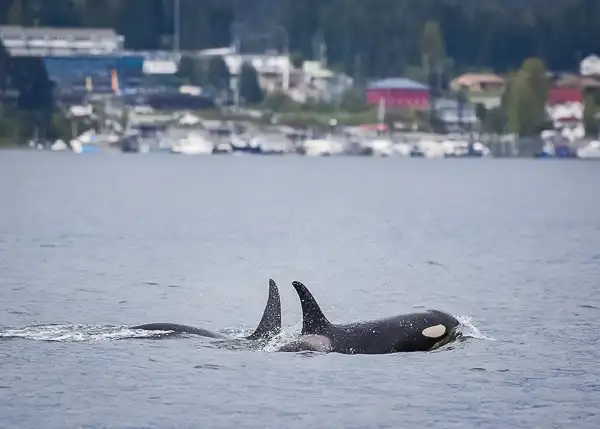
Despite the name killer whale, orcas are the largest members of the dolphin family. In Alaska, they’re harder to spot than humpbacks. Both resident and transient pods cover wide areas, and sightings on cruises are less common. We were fortunate enough to see a pod of orcas during a whale-watching tour in Juneau, but not every cruiser gets that chance.
8. Alaska has the most volcanoes in the U.S.
There are over 130 volcanoes across the state that could be considered active. Most of them are in remote areas, especially along the Aleutian Islands. You don’t always think of volcanoes when you picture Alaska, but they’re very much part of the landscape.
9. Alaska has more coastline than the rest of the U.S. combined
It stretches over 33,000 miles when you count all the islands and inlets. That’s more than Florida, California, and every other coastal state put together. Cruising is one of the best ways to experience it, especially when you’re weaving through the Inside Passage.
10. Bears live all over Alaska
Alaska is home to both black bears and brown bears, which are found in forests, near rivers, and even in some communities. Polar bears also live in Alaska, but only in far northern coastal areas that aren’t on cruise itineraries. Some wildlife viewing excursions offer the chance to maybe spot bears, especially in July and August during salmon season, though sightings aren’t guaranteed.
11. Alaska is home to over half of the U.S. National Park land
That includes Glacier Bay, Denali, and Kenai Fjords, names you’ll see often while cruising or planning a trip. The sheer scale and wilderness protected here is part of what makes visiting Alaska so unique.
12. Dog mushing is the state sport
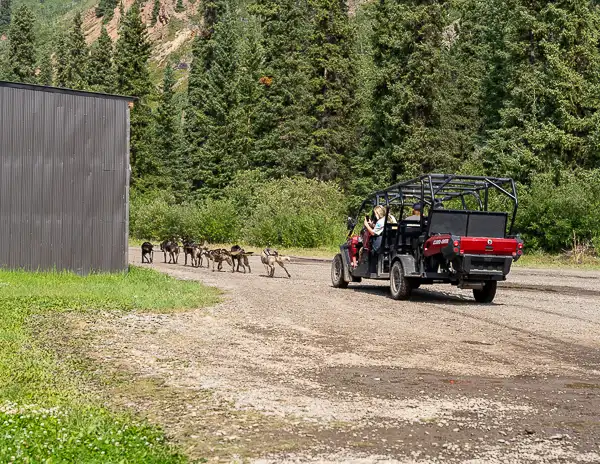
Alaska’s official state sport isn’t baseball or football. It’s dog mushing. The Iditarod sled dog race takes place every year and celebrates the state’s rich history of dog sled travel. During your cruise, you might even get the chance to try it yourself. Some excursions offer summer dog sled rides on glacier snowfields, often with a chance to meet the dogs.
13. Most Alaska cruises visit just a few key ports
While Alaska is massive, most cruise itineraries stop in a handful of towns along the Inside Passage. Ports like Juneau, Ketchikan, Skagway, Sitka, and Icy Strait Point are common stops. Each one has its own history, landscape, and excursion options, but they’re all coastal and only reachable by sea or air
14. Seeing the northern lights on a cruise is rare, but not impossible
Alaska is one of the best places to see the aurora borealis, but cruise sightings aren’t that common. You need clear skies, darkness, and the right timing. Late August into September is usually the best time, but in recent years, people have spotted them as early as late spring during periods of intense solar activity. Some cruise lines, such as Princess, Holland America, and even NCL, offer a Northern Lights call list for sign-up. If the crew sees them, they’ll ring your cabin so you don’t miss it. It’s not something to count on, but it’s possible.
15. Alaska has its own time zone
Alaska follows Alaska Standard Time, which is one hour behind Pacific Standard Time. It sounds minor, but you might notice the difference, especially if you’re flying in from the East Coast or adjusting excursions around port times.
16. Alaska food goes beyond king crab
Yes, king crab is famous, but Alaska food includes much more—like halibut cheeks, wild-caught salmon, reindeer sausage, and sweet treats like fireweed honey. Each cruise port has its own local specialties, and trying something new is part of the experience.
BEFORE YOU SET SAIL, HERE ARE SOME RELATED ARTICLES YOU DON’T WANT TO MISS:
- Skagway to Yukon by Bus, Return on the White Pass Railway
- Juneau, Alaska: See a Glacier and Eat crab legs!
- Spending Half a Day in Ketchikan, Alaska During a Cruise Stop
- Heading to Alaska on a Cruise? Here’s What to Pack
- Luxury Cruising to Alaska: NCL’s The Haven
Kathy Ava
Meet Kathy Ava, a food, travel, and cruise writer based in Los Angeles/Pasadena, and the owner and main writer of Tasty Itinerary. With over 20 years of experience planning trips and logistics at her full-time job and for herself, she's become a pro at crafting unforgettable tasty itineraries. She's always on the hunt for delicious, fun travel destinations and cruise itineraries. She firmly believes that life is short and we must make the most of it, so always say yes to dessert.

